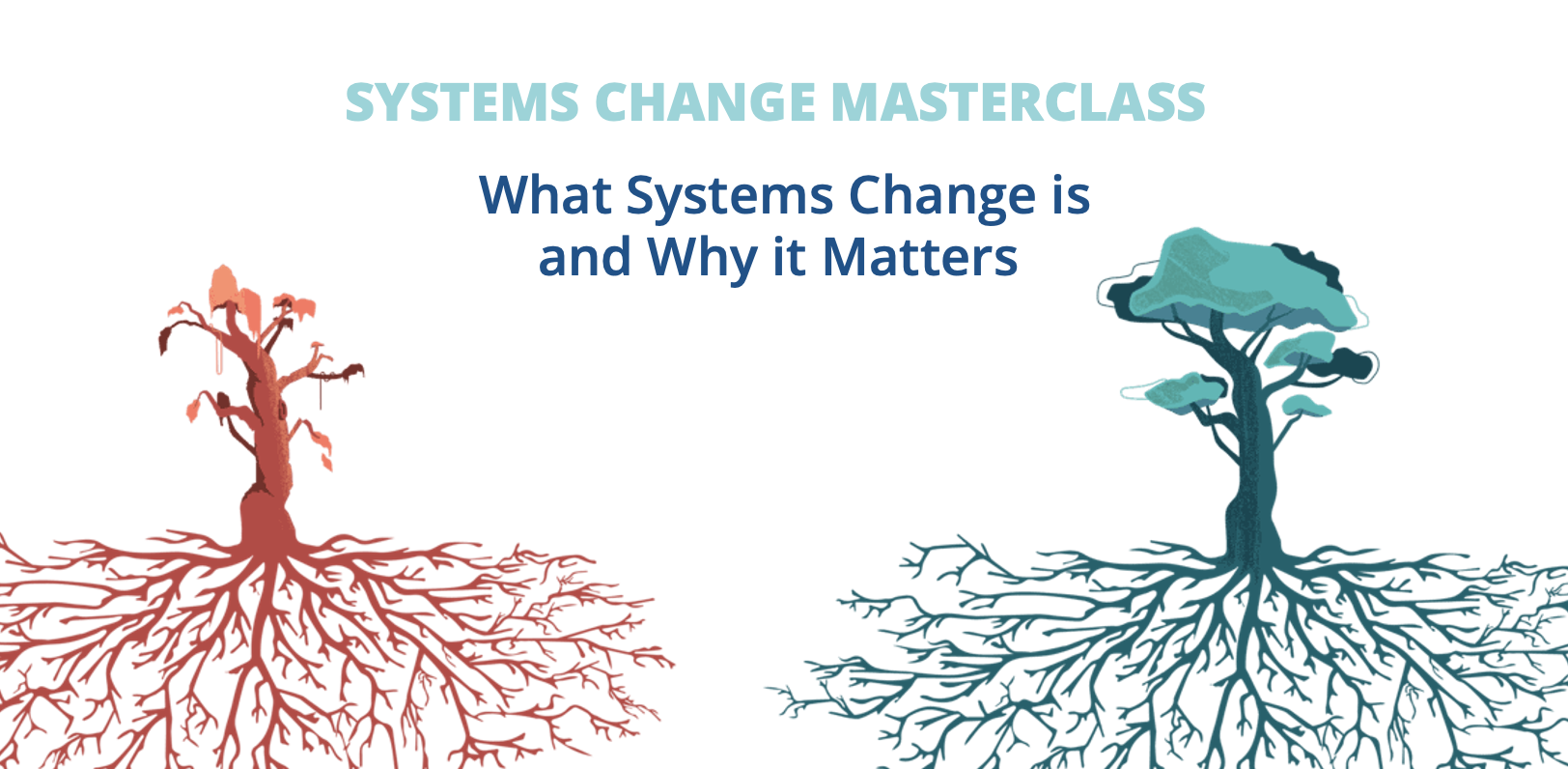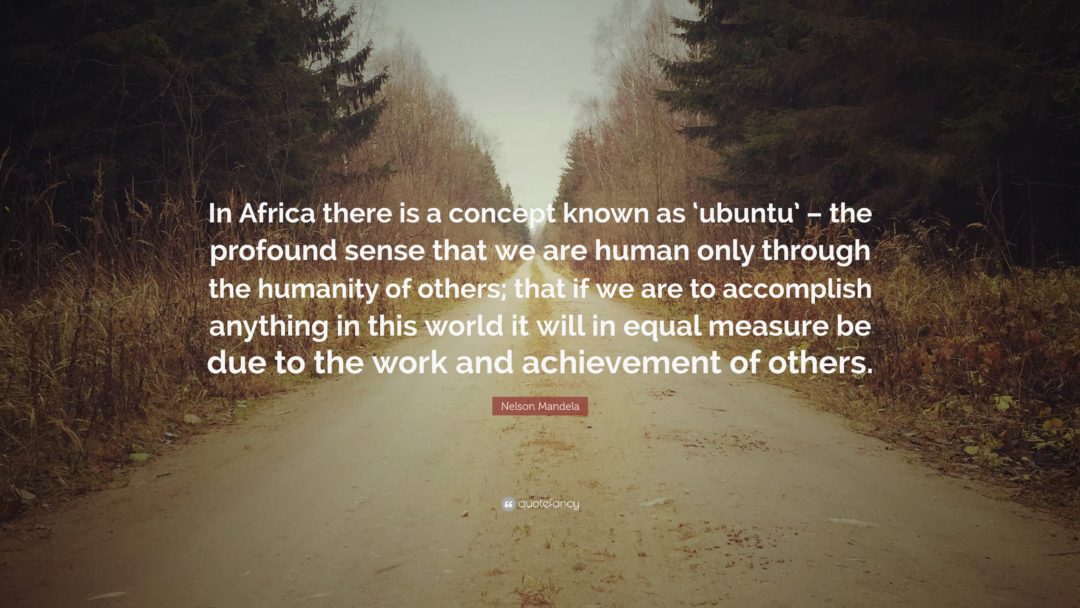For some time, I’d looked for opportunities to be part of a network of social entrepreneurs looking to contribute in a strategic and collaborative way to a more equitable and sustainable society, rather than working in relative isolation. I’d heard about the Ashoka fellowship, and wondered if one day I’d be able to join this collaborative community with the aim to make a world in which everyone is a change maker. I think this aspiration likely came from reading a large number of social entrepreneurship books featuring inspiring stories of the work of Ashoka fellows, that also credited Ashoka as the very founders of social entrepreneurship as a concept! This is a short video from 2013 about Ashoka, hearing from the Founder Bill Drayton.
Therefore after submitting an application in haste amidst glandular fever, I was so excited to be offered a chance to apply to the Ashoka Changemakers Everywhere Academy, a sixth month online programme sponsored by American Express, designed to catalyse participants’ understanding of driving systems change, bringing together social enterprise founders from across the world in the process.
In context, this is the first time I’ve been shortlisted for any form of leadership or social entrepreneurship programme, and everything I’ve learnt has been self-taught whilst teaching full-time or gained through experience. Despite being quite unwell throughout the 6 month programme, watching the videos and listening to participants has enabled me to transform my understanding, and will enable me to develop strong social leadership programmes for my own students.
Ashoka finished the course by asking us:
‘Not just to be a change maker, but a change maker maker’.
Therefore, I’m sharing some reflections in the hope of sparking a wider change, and building a conversation around notions of systems change and collective leadership.
1. Embedding well-being
Although well-being was the final component of the course, I think throughout the programme there was a clear focus on being attentive to personal sustainability and perhaps ‘self system change’ whilst working collaboratively to drive wider change. Being further exposed to the challenges faced by social entrepreneurs more widely, and the toll of advocating for change upon others working in this space, was beneficial for me as it took my individual challenges and placed them within a wider community context.
I became aware that there is research to demonstrate that there are key things that support wellness within social entrepreneurship work (and work more widely) such as values alignment, belonging to communities of aligned practitioners, having safe spaces to speak out on your beliefs, outlets for creative expression, and feeling that you have the power to make changes. I’d had intuitions around these areas before, but the programme formalised the value of these areas in my mind.
I am now more aware than before that these considerations are vital to sustain my own impact in a work place, and I have also reflected on how I can better create these spaces and factors within EduSpots for others. I have also realised the importance of bringing in staff and volunteers who are fully aligned with our values, ethos and aims, for the benefit of everyone’s well-being and our impact. For me, in the last year, learning to articulate my needs and feel understood has also been invaluable and I will encourage others to grow these skills in self-expression.
Listening to the experiences of other social entrepreneurs was also valuable to me. This is Bedriye’s story as an example:
2. Identifying the system you are looking to change
The course started with exploring the difference between direct impact, direct scaled impact, systems change and mindset systems change, before asking you to identify a ‘system’ that is responsible for causing the problem you have identified as important to solve.
This is a challenging process for any social entrepreneur, because all societal challenges are caused by multiple intersecting systems. I realised the importance of identifying all systems involved in a social and environmental issue, and exploring how small shifts in a singular system might be able to generate long-lasting change in a wider network of systems.
Especially coming from a philosophy academic background, where we are used to evaluating concepts in significant depth, I found it challenging to identify a specific ‘system’ within the EduSpots network, given that they come in a multiplicity of forms, and different scales of operation. Even defining ‘system’ was a significant process. Choosing a singular system to focus EduSpots ‘systems change story’ upon was hard, because EduSpots looks to make changes to various systems at the community level (mindset and operational) as well as within the formal education sector and society more widely.
In the end, I settled on analysing current models for community education spaces, but realised that the wider system change that would lead to greater change was that of a mindset change relating to the relationship community members have with educational providers. Crucially, EduSpots asks people to shift their mindset from that of education consumers to educational creators – we involve students, teachers and community members in educational solutions that relate to the local context, believing that this input adds value in different measurable ways.
This approach and systems change fits well with Jon Alexander’s campaign for a shift in relationship across societal models from consumers to citizens, outlined in his new book Citizens. You can watch my EduSpots author talk interview with him here:
3. Analysing systems – the five 5rs model
Having identified a particular system to focus on, Ashoka encouraged us to explore the 5 Rs framework as a way of analysing that system, and then narrowing in on one or more of these ‘Rs’ when identifying the particular change that will be made and its impact. The ‘5 Rs’ are roles, relationships, resources, rules and results, and this model was taken from the Source: This 5R Framework was adapted from “The 5R Framework in the Program Cycle” by USAID – read more here.
Considering EduSpots, the key difference we are offering as compared to the typical national library service (such as that offered by the Ghana Library Authority) is that we are changing the relationship between users and the education space. Ultimately, in EduSpots, our users own and lead the education spaces, thus also playing a role in deciding the rules, acquiring and using resources and shaping and evaluating the results. We also offer flexible grant funding to our most committed volunteers and this shifts power to them in decision-making, advancing their role and their relationships with the space further
4. You need to analyse stakeholders and partners
The Ashoka team encouraged us to spend some time considering all the stakeholders in this systems change – this could be organisations, bodies, individuals, businesses, schools and other entities.
Note that they also have different values – e.g. they could be resource providers of different forms, competitors, organisational allies, consumers participants, or even potential troublemakers or simple onlookers.
It is then important to go through the following stages:
- Consider their goals and motivations relating to the systems change.
- Consider what they could bring to achieving this particular systems change – e.g. knowledge, skills, mobilisation, funds, resources, influence etc.
- Evaluate them in order of relevance – we will not have time and resources to bring all stakeholders together, so identifying those with most to offer the systems change strategy is vital, perhaps also considering those who might present the biggest risk to success if not involved.
A simple table was a helpful tool:
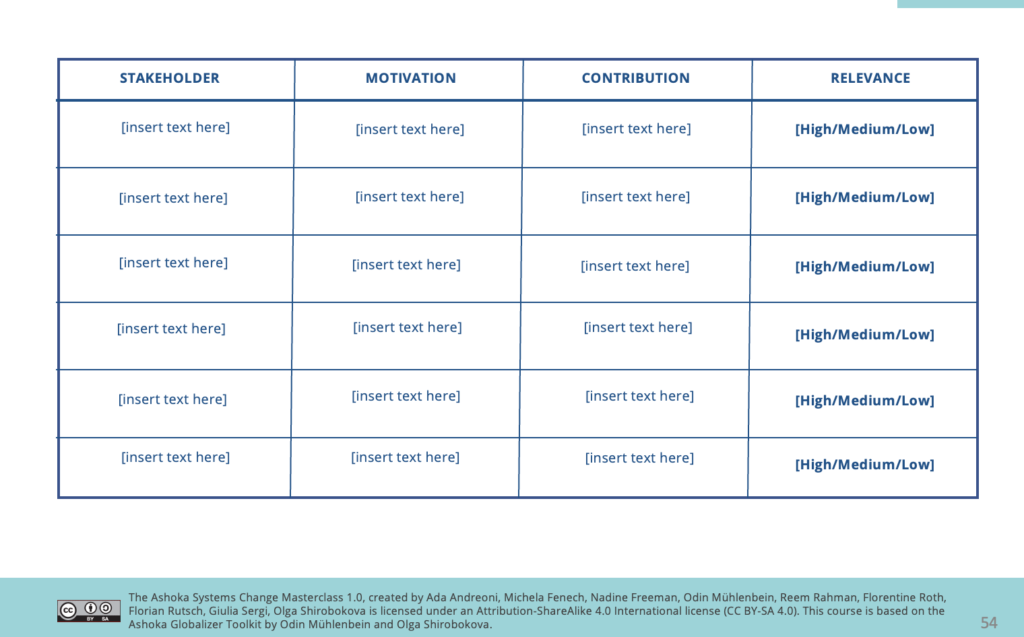
It is also vital to consider the roles different partners might take, as there are different forms and levels of collaboration. This framework also shown in the image below, exploring levels of engagement from CoCreative, was extremely helpful in appreciating the difference in approach when working in partnerships between informing, consulting, involving, collaborating and co-creating.
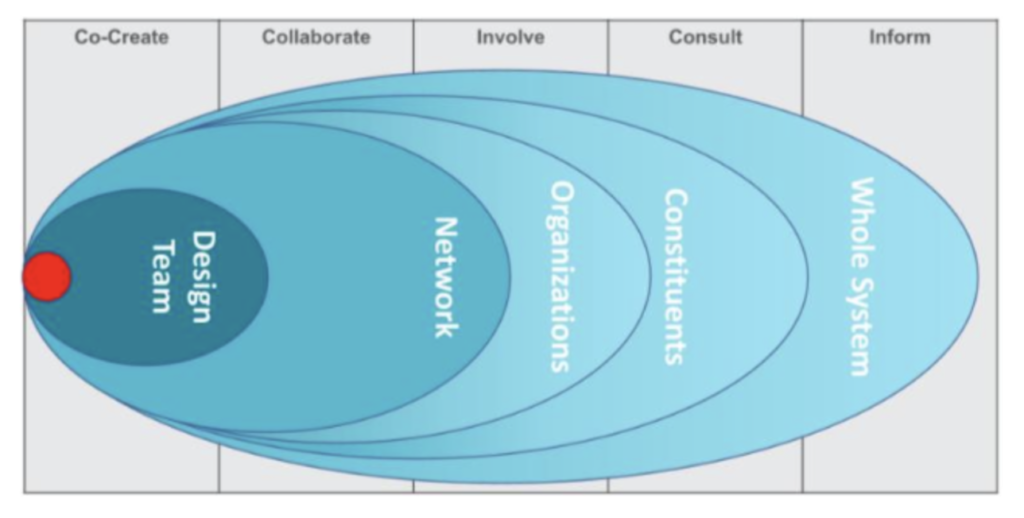
5. Taking a long hard look at yourself as leaders
The programme invited us to take a close look at ourselves, consider our motivations and really reflect on how genuinely collaborative we are as a leaders, giving a powerful call for social entrepreneurs to step away from the ‘hero’ model of past leaders.
This article from Rahman, Fenech, Freeman, Herbst and Matielo (2018) defines collaborative approaches to systems change as:
an effective way to tackle the nature of complex social problems. Certain social problems have the qualities of being large-scale, multi-sector, interconnected, and constantly changing, so they require solutions that have those same qualities as well;
designed to remain accountable to having impact that reaches the entire community served;
a more efficient way to optimize resources to overcome fragmented, “service delivery chaos11” by leveraging resources outside of just a single organization;
an essential way to keep up with the hyper-pace of innovation and change and ensure sustainable value chains; and
a more realistic way to ensure sustained impact because they pay deliberate attention to diversifying the stakeholders as co-owners.
They highlight the importance of ‘opening up and letting go’, and the value of moving from traditional to collective leadership models.
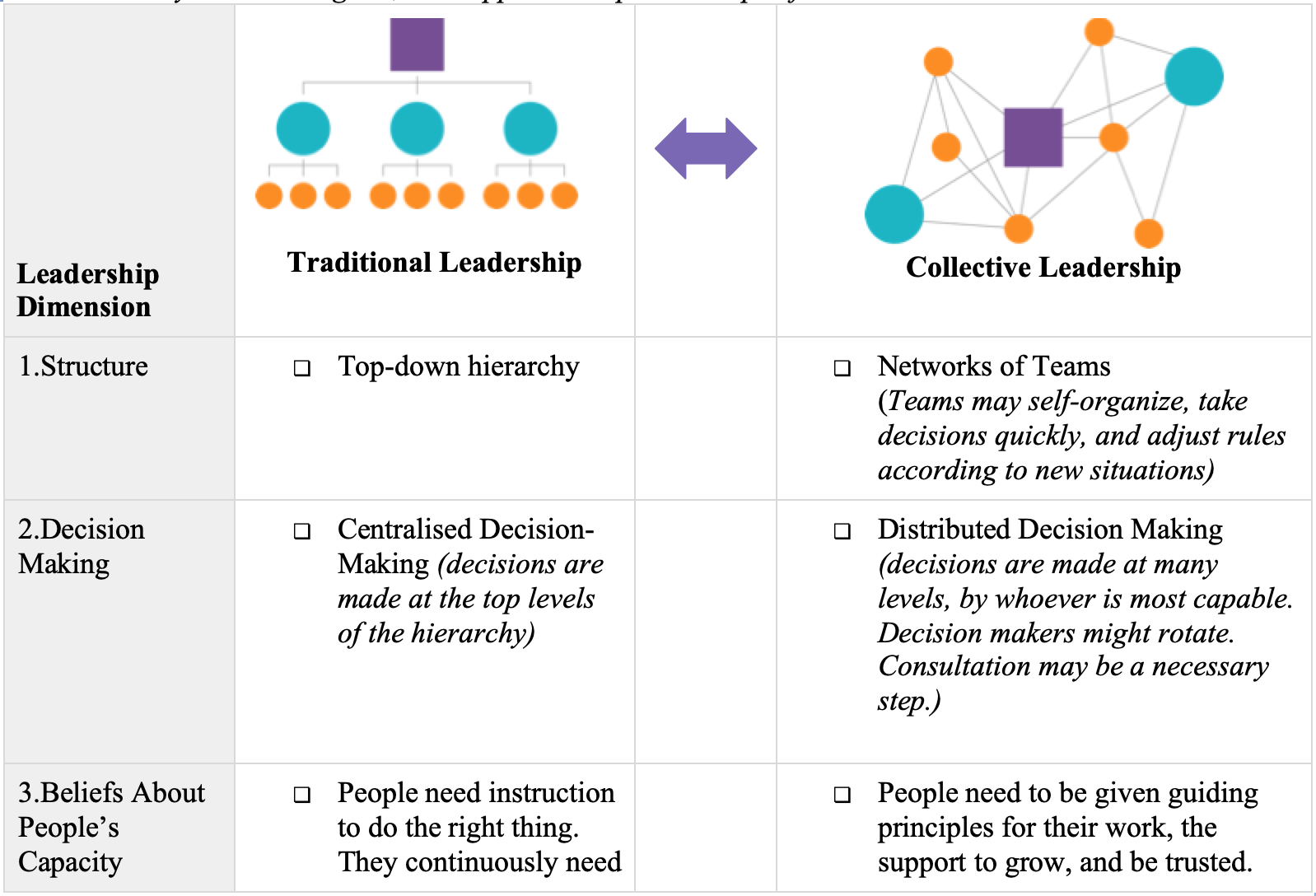
They suggest that organisations also need to recognise that problems are not static or isolated but rather interconnected, shifting, and emerging. This requires constantly evolving planning processes that are flexible to change and adapt to feedback from diverse sources.
In the EduSpots context, we are continuing to work on shifting power to volunteers in diverse ways, and amplifying their voice in decision-making. To give some examples:
- All knowledge utilised in EduSpots is gained through collaboration of some form with volunteers.
- Our staff team in Ghana (who are all part-time 1-2 days a week) are mostly made up of volunteers, who really understand and are committed to the work on the ground.
- Volunteers input into our ‘Dream Spot Model’ which is being created collaboratively, ahead of volunteers contributing to the training design which enables Spots across the network to move towards this model.
- We offer flexible grant funding to our volunteers to allow them to progress their Spots based on their own analysis of the needs.
6. Learn to let go
Linked to the above, and tying back to individual and community well-being too, the Ashoka course encouraged us all to ‘let go’ in different ways, for example:
- Sharing resources, ideas and skills with other organisations.
- Allowing another organisations or individuals to lead the change if they are better positioned to do so.
- Empowering employees and volunteers with guiding principles rather than specific instructions to allow them to input into the design of the implementation process, whilst giving sufficient support.
- Being more aware of our role in decision-making as founders – some decisions are best for us not to be the ones making.
- Deep listening and empathy, connecting to unlearning and withholding immediate judgement.
These are all areas that I continue to work on as a leader. In particular, I have an acute awareness of the need for me to step back when it comes to making decisions in relations to community contexts where I do not have the appropriate cultural understanding or local knowledge. It is vital for leaders to understand when they do and do not need to make decisions.
Seeing through new eyes
Above all, I think this opportunity opened my eyes to the importance of using a diverse range of tools for constant organisational and self-reflection, and to spend time stepping back and looking at the wider landscape of change. It’s always valuable to evaluate things through a lens provided by someone else – whether this is a mentor, coach, programme, toolkit, or similar, as it allows you to see your work through new eyes.
Applying Ashoka’s ideas to EduSpots has been invaluable to our evolution, and I will be continuing to create spaces with the EduSpots staff and volunteer team to digest and apply their thinking to our model in the months and years ahead.
Thank you, Ashoka!
Ashoka have in fact, in line with their vision of ‘letting go’, now placed this entire course online, free to access. You can visit it here:
https://www.ashoka.org/en-in/systems-change-masterclass
https://www.youtube.com/c/ashoka

